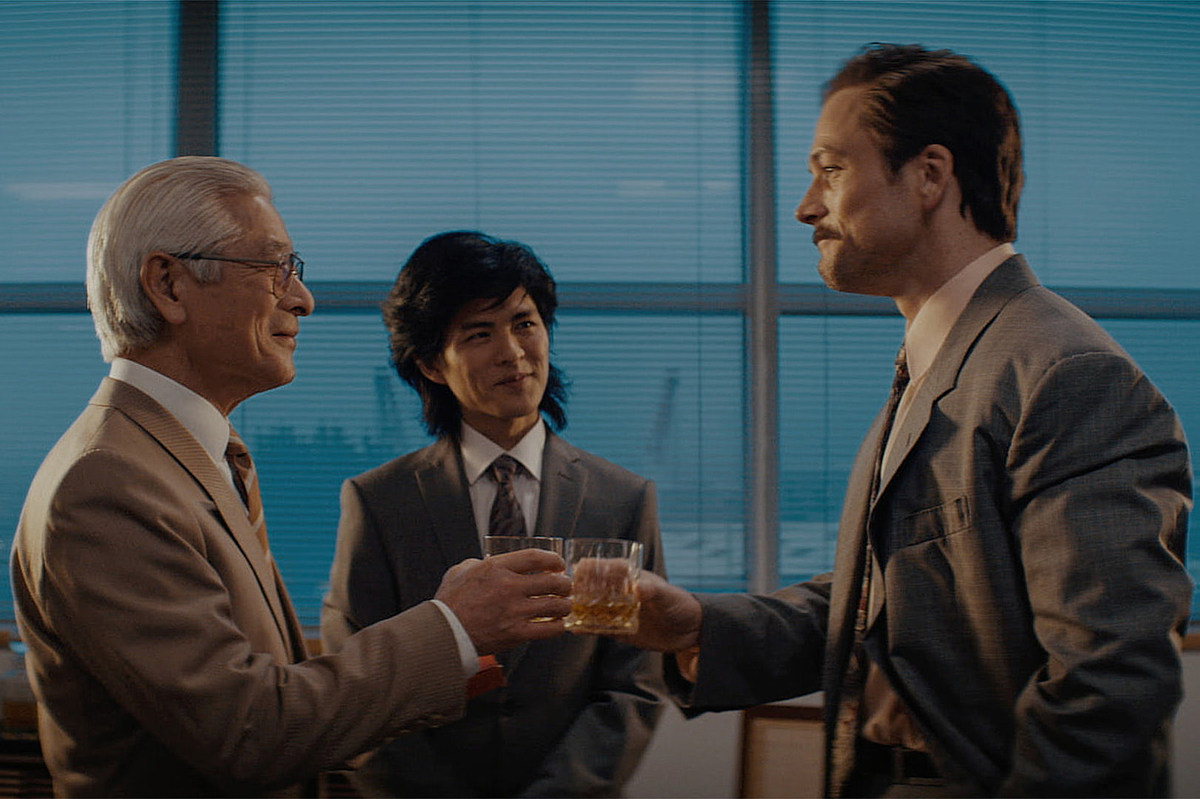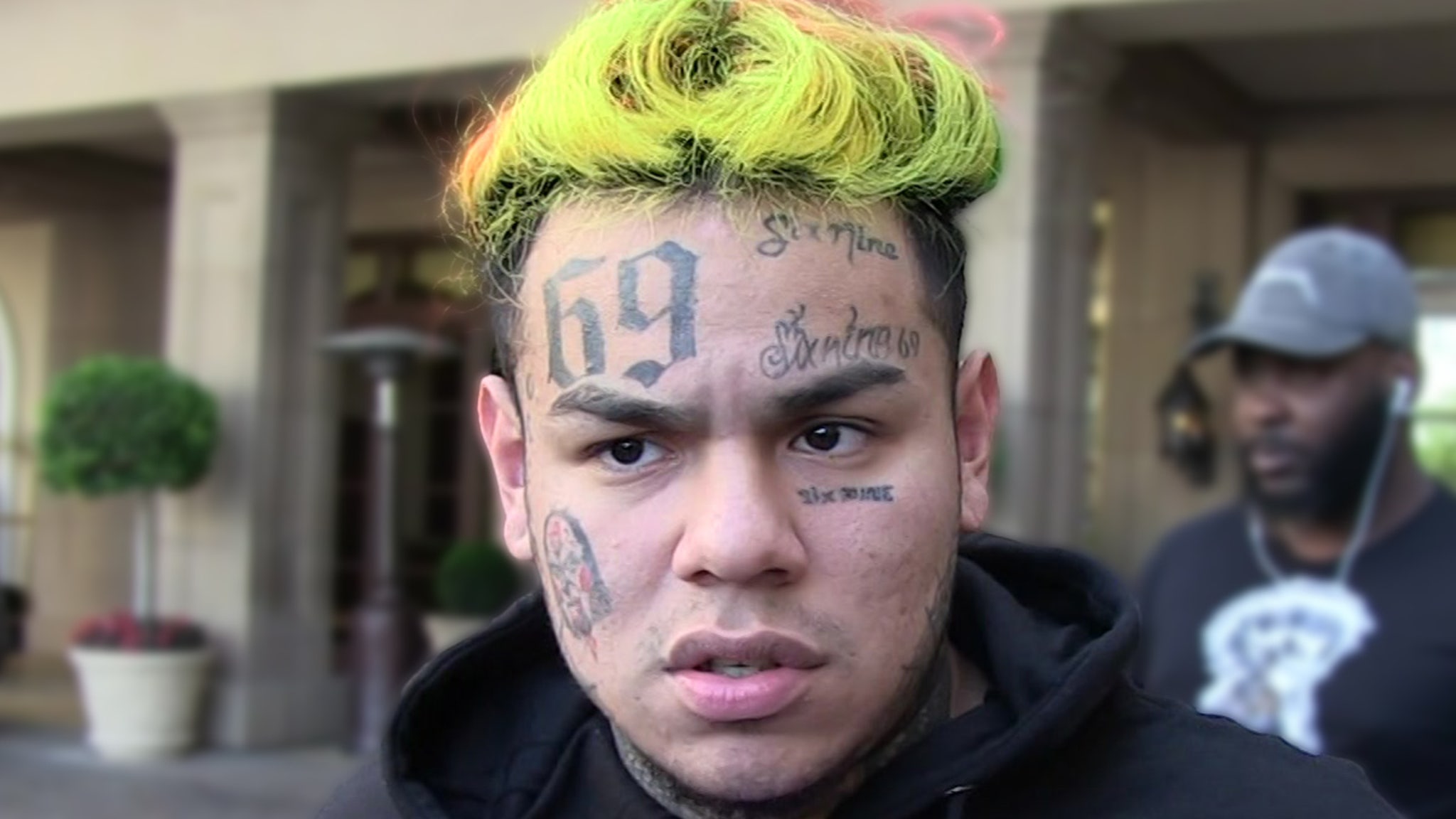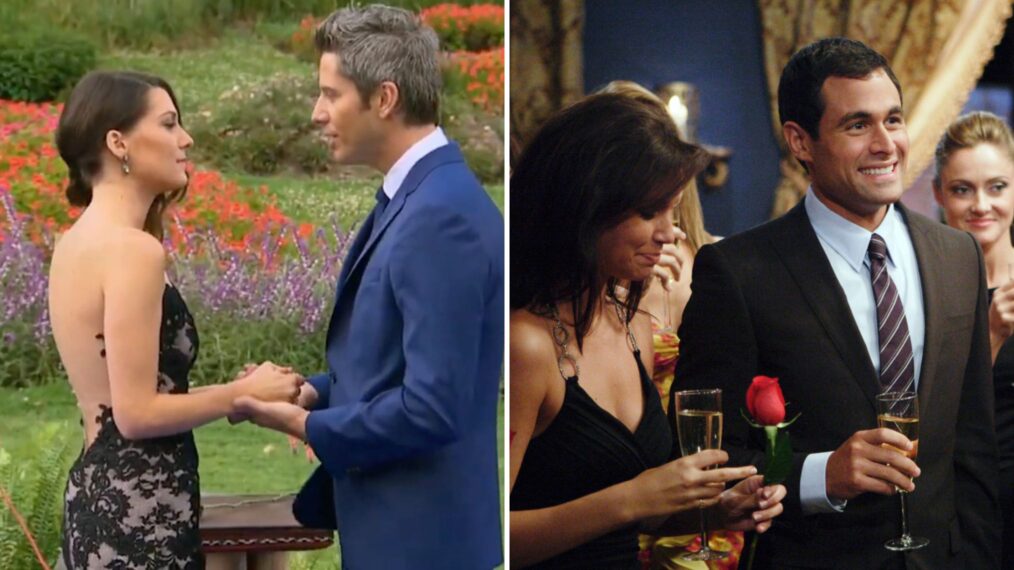The movie version of Tetris tells a story nearly as absurd as the notion of an Italian plumber traveling to a magic kingdom to fight a giant turtle and rescue a princess. It involves a mad fight over the rights to the original Tetris game, which was created in Russia by an unassuming computer engineer named Alexey Pajitnov.
Taron Egerton plays Henk Rogers, an ambitious game designer and entrepreneur who stumbles upon an early iteration of Tetris at a trade show and becomes obsessed with it. Over the course of Tetris, directed by Jon S. Baird and written by Noah Pink, Rogers mortgages his home, leverages his company, and risks potential imprisonment behind the Iron Curtain, all to secure the rights to sell Tetris in the West, while evading, outsmarting, and outbidding several competitors, including a cunning European businessman named Robert Stein (Toby Jones), and the arrogant Kevin Maxwell (Anthony Boyle), the CEO of one of Britain’s largest media companies, Mirrorsoft, and the heir to one of the country’s largest fortunes.
An opening title card proclaims that Tetris was “based on a true story.” But just how truthful is the film version? In some ways, it is very accurate. In others, it is a complete fabrication. But the parts that are authentic and the parts that are not may surprise you in a few cases. (In others, they will definitely not.)
The Real Story of Tetris
For the most part, all the broad strokes — and all the key players — in Tetris are true to life. As shown in the film, the classic puzzle game was created by Russian computer scientist Alexey Pajitnov (played by Nikita Yefremov), who developed the game in his spare time. Pajitnov was inspired by a lifelong love of puzzles to develop Tetris, a name that combined “tetra” (or four) and “tennis” (which has very little to do with the finished game, but whatever). As the film shows, the early version of the game was incredibly crude; Pajitnov wrote the program on a computer without a graphics card, so the first tetrominoes pieces were made out of brackets.
This was Russia in the mid-1980s, circa the dying days of Communism. That meant Pajitnov could not sell his game or profit off its rights. Instead, he initially gave copies of Tetris to friends and colleagues in Russia, and it proved so addictive it spread like wildfire. As in the Tetris film, copies even made there way to Hungary — where they were first seen by a salesman named Robert Stein of Andromeda Software. Impressed by the game, Stein was able to use his connections in Russia to contact Pajitnov; the pair sent a series of faxes indicating Stein’s interest in licensing the game and Pajitnov’s willingness to enter an agreement with him.
Stein interpreted the faxes as a contract, and then began selling the rights to make Tetris to various other companies, including Mirrorsoft, the company owned by British media tycoon Robert Maxwell (played in the film by Roger Allam). But the gray area between what Stein thought he had and what he really possessed eventually led to a mad scramble for various rights to Tetris in various territories and on various sorts of platforms: Computers, arcades, video game systems, and handheld.
The Film Version
The Tetris movie’s main character is not Pajitnov or Stein, but Henk Rogers, the Dutch game designer and salesman who ultimately becomes the middle man between the Soviet government organization “Elorg,” which controls the rights to Tetris, and Nintendo, the company that would ultimately make Tetris a pop culture legend by packing it with its first handheld Game Boy video game system.
The movie version of Rogers (played by Egerton) is a charming, relentless, but ultimately extremely honest businessman. After he acquires the rights to sell Tetris in the Japanese market, he convinces Nintendo to let him make a version for the Famicon (basically the Nintendo Entertainment System’s Japanese counterpart). When Nintendo shows Rogers the prototype Game Boy, he is the one who suggests they use Tetris, rather than a new Super Mario Bros., as the game included with each system. When his efforts to get handheld rights from Stein and Mirrorsoft are unsuccessful, Rogers travels to Russia — on a tourist’s visa, which is a big no-no — and walks into Elorg without an appointment to negotiate his own deal.
That leads to an outrageous sequence where, by sheer happenstance, Rogers, Stein, and Mirrorsoft’s Kevin Maxwell are all simultaneously negotiating their own deals with Elorg in separate conference rooms, while the head of the organization, a man named Belikov, attempts to extract the best possible deal for the Soviets. Initially, Belikov accuses Rogers of selling illegal bootlegs of Tetris, because he does not believe anyone holds the rights to make versions of the game for consoles like the Nintendo.
It turns out that Stein had interpreted his initial contract with Elorg extremely broadly, taking his rights to sell Tetris for computers to also mean home video game systems. After Rogers points out the flaw in the contracts to Belikov, Belikov forces Stein to sign a new contract which essentially cuts him out of the Tetris gravy train for consoles and handheld games entirely, and allowing Rogers and Nintendo to escape Russia with the deal of a lifetime — despite Robert Maxwell flying to Russia and using his friendship with Soviet Union leader Mikhail Gorbachev to attempt to pressure Elorg to sell him the rights to the game.
Separating Fact From Fiction
As ludicrous as this conference room sequence seems, it is apparently based in large part on what really happened. According to the BBC documentary Tetris: From Russia With Love, which you can watch below, Belikov and Elorg really did perform simultaneous negotiations with all these parties, essentially pitting one against the other. And another YouTube documentary, The Story of Tetris, even backs up the notion that it was Rogers himself who pointed out the flaws in Elorg’s contracts with Stein to Belikov, giving him an upper hand in the negotiations. It is also apparently accurate that the Maxwells tried to get Gorbachev to influence the negotiations in their favor, a gambit that ultimately proved unsuccessful.
What is not accurate, or at least is not present in any version of the creation of Tetris and the negotiations for the right to produce the game around the world that I could find, is the involvement of Soviet politicians and KGB agents trying to intimidate Henk Rogers into abandoning his quest for the Tetris rights. Some of the threats shown in the film did happen; Rogers confirms in one documentary that when he presented Elorg with a copy of Tetris for Famicon, they really did accuse him of theft, and he did worry for a while that he might end up in a Russian prison camp.
But other elements of the KGB’s tactics are totally invented for the film. In an interview with Collider, Jon S. Baird confirmed that the movie’s climactic chase scene, which sees Henk Rogers and several Nintendo employees racing to the airport — and driven there by Pajitnov — to escape Moscow before the KGB can catch them, did not actually take place. As he explained…
We were being a bit metaphorical with that because they were under a lot of pressure from, obviously, the KGB and from Maxwells and from everything else, but the car chase through the center of Moscow to get to the airport and stuff was definitely a Hollywood version of their pursuit from the rival factions of who wanted Tetris.
In a separate interview, the real Henk Rogers said that while he and Alexey Pajitnov did consult on the script for the film, and the creators did listen when their suggestions “had to do with authenticity … when it started getting into [creative flourishes like] the car chase and all that, it was like, ‘OK, now it’s all them.’ We couldn’t change anything.”
So, not too surprisingly, the wild car chase is the biggest and most extreme change in the movie. Make sure you come back to ScreenCrush in a few weeks so we can explain how The Super Mario Bros. Movie deviates from the actual story of Mario Mario during his journey to the Mushroom Kingdom. And if you’re interested in more of the real story behind Tetris, this BBC documentary includes interviews with many of the key players, including Rogers, Stein, and Pajitnov.
And this video incorporates elements of that doc, and other sources, to tell an even more comprehensive version of the events.
You can watch Apple’s own video on “the story behind Tetris” below:
Tetris is playing in select theaters. It will be available on Apple TV+ on March 31.



























































![Mason Ramsey – Twang [Official Music Video] Mason Ramsey – Twang [Official Music Video]](https://i.ytimg.com/vi/xwe8F_AhLY0/maxresdefault.jpg)
















:quality(85):upscale()/2023/07/18/925/n/1922564/047f7fce64b7005b023f57.68749670_.jpg)



